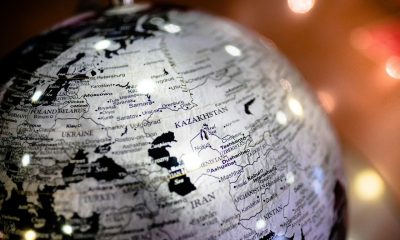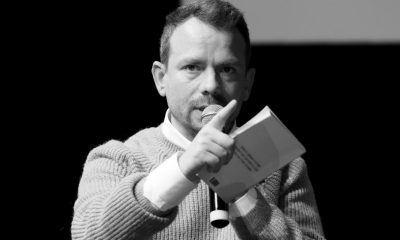EU
ראָמאַ ינטאַגריישאַן: לאַנדיש טרעגערס דיסקוטירן פּראָגרעס און בעקן געדאנקען

 Two months after the adoption of a set of recommendations by member states to step up the economic and social integration of Roma communities (see יפּ / קסנומקס / קסנומקס, און יפּ / קסנומקס / קסנומקס, מעמאָ / קסנומקס / קסנומקס), a network of co-ordinators responsible for overseeing the national Roma integration strategies from all 28 EU countries is meeting today (13 February) and tomorrow in Brussels to discuss progress and challenges ahead.
Two months after the adoption of a set of recommendations by member states to step up the economic and social integration of Roma communities (see יפּ / קסנומקס / קסנומקס, און יפּ / קסנומקס / קסנומקס, מעמאָ / קסנומקס / קסנומקס), a network of co-ordinators responsible for overseeing the national Roma integration strategies from all 28 EU countries is meeting today (13 February) and tomorrow in Brussels to discuss progress and challenges ahead.
This 4th meeting of the national Roma contact points network will focus on how to better implement integration measures locally. The national contact points will also discuss with the national equality bodies how to effectively address discrimination towards Roma in each member state. The European Commission will publish its progress report on the national Roma integration strategies in April 2014 in time for a Roma Summit with national governments, Roma representatives, civil society and the European institutions which will take place on 4 April 2014. This will be the moment to take stock of member states' efforts to deliver on their Rome integration pledges.
Vice President Viviane Reding, the EU's justice commissioner, said: "EU action has succeeded in placing Roma inclusion high on the political agenda, both at EU and national level. We now need to see concrete results. After the unanimous adoption of the first ever legal instrument on Roma at the end of 2013, the European Commission called on all Member States to put words into action. We cannot remain idle as entire communities of people are marginalized from society and the economy. Today's meeting is a good opportunity for those who have their eyes and ears on the ground to discuss amongst each other and with equality bodies how to make national actions more effective, and how to improve the integration of Roma across Europe."
The unanimously adopted the Council Recommendation of December 2013, which requires EU member states to step up their efforts to better integrate Roma communities, and gives specific guidance to help strengthen and accelerate their efforts. It recommends that member states should take targeted action to bridge the gaps between the Roma and the rest of the population.
Based on Commission reports on the situation of the Roma over recent years, the Recommendation focuses on the four areas where EU leaders signed up to common goals for Roma integration under the EU Framework for national Roma integration strategies (יפּ / קסנומקס / קסנומקס): access to education, employment, health care and housing. To put in place the targeted actions, it asks member states to allocate not only EU but also national and third sector funds to Roma inclusion – a key factor identified by the Commission in its evaluation of member states' national strategies last year (יפּ / קסנומקס / קסנומקס).
הינטערגרונט
The national 'Roma contact points' were set up following the EU's adoption of common objectives for Roma integration in 2011 (see יפּ / קסנומקס / קסנומקס, מעמאָ / קסנומקס / קסנומקס). The contact points are responsible for coordinating national efforts to improve the situation for Europe's largest ethnic minority, for following up on the progress made under the national Roma integration strategy and reporting to the European Commission.
Roma integration is not only a moral duty, but is also in the interest of each and every member state, especially for those with large Roma communities. In some member states, Roma represent a significant and growing proportion of school students and the future workforce. Efficient labour activation policies and targeted and accessible support services for Roma job seekers are crucial, in order to allow Roma people to actively and equally participate in the economy and society.
In its 2013 report, the European Commission called on member states to improve the economic and social integration of Roma in Europe. Member States developed these plans in response to the Commission's EU Framework for national Roma integration strategies, adopted on 5 April 2011 (see יפּ / קסנומקס / קסנומקס, מעמאָ / קסנומקס / קסנומקס) וואָס איז געווען ענדאָרסט דורך אי.יו. פירער אין יוני 2011 (יפּ / קסנומקס / קסנומקס).
EU structural funds are available to member states to finance social integration projects, including for improving Roma integration in fields such as education, employment, housing and health. Around €26.5 billion was made available for social inclusion projects as a whole over from 2007-2013. Under the new financial period 2014-2020, member states must earmark at least 20% of their European Social Fund allocation to social inclusion. The aims is to secure the appropriate financial resources for Roma integration.
Member states are responsible for managing these funds, including selecting specific projects. Much of the funding goes to projects aimed at socially excluded groups more generally and is not necessarily only meant for Roma communities. In order to ensure more effective and targeted projects, the Commission has asked member states to involve their national Roma contact points in the planning of funds deployment for the Roma, and to also involve local and regional authorities.
מער אינפֿאָרמאַציע
אייראפעישער קאַמישאַן - Roma
The Commission’s 2013 Progress report on Roma
האָמעפּאַגע פון וויצע פּרעזידענט וויוויאַנע רעדינג
גיי די וויצע-פּרעזידענט אויף טוויטטער: @וויוויאַנערעדינגעו
גיי אי.יו. גערעכטיקייט אויף טוויטטער: @עו_דזשוסטיסע
שער דעם אַרטיקל:
-

 באַנגלאַדעשקסנומקס טעג צוריק
באַנגלאַדעשקסנומקס טעג צוריקבאַנגלאַדעש פרעמד מיניסטער פירט ינדעפּענדענסע און נאַשאַנאַל טאָג סימכע אין בריסל צוזאַמען מיט באַנגלאַדעש נאַשנאַלז און פרעמד פרענדז
-

 קאנפליקטןקסנומקס טעג צוריק
קאנפליקטןקסנומקס טעג צוריקקאַזאַכסטאַן טרעט אריין: ברידגינג די צעטיילונג פון אַרמעניאַ-אַזערביידזשאַן
-

 רומעניעקסנומקס טעג צוריק
רומעניעקסנומקס טעג צוריקפֿון Ceausescu's Orphanage, צו ציבור אָפיס - אַ געוועזענער יתום שטרעבט איצט צו ווערן בירגער - מייַסטער פון קאַמיוניטי אין דרום רומעניע.
-

 קאַזאַקסטאַןקסנומקס טעג צוריק
קאַזאַקסטאַןקסנומקס טעג צוריקוואַלאַנטירז אַנטדעקן בראָנדז אַגע פּעטראָגליפס אין קאַזאַכסטאַן בעשאַס ענוויראָנמענטאַל קאַמפּיין

























